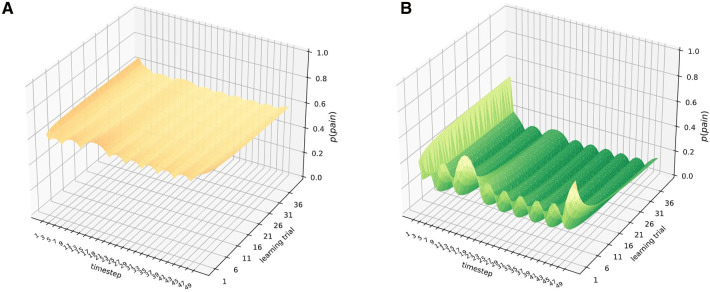Figure 5.
Simulation of ten sessions of exposure therapy in the nullspace of marginal , with ambiguous and imprecise likelihoods (A) and precise and accurate likelihoods (B). On the -axis are the time steps, on the -axis the marginal probabilities of pain, and on the -axis the learning trials per time step. The combination of null space derived transition probabilities and an imprecise and ambiguous likelihood model (, , , ) renders the repeated presentation of innocuous sensory information rather inefficient: inferred probabilities of pain remain within the range of the predefined marginal. When the likelihood model is precise and unambiguous (, , , ), however, the presentation of harmless sensory information is more efficient in reducing the inferred probability of pain.

